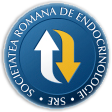
- Login
- Register
- Home/Current Issue
- About the journal
- Editorial board
- Online submission
- Instructions for authors
- Subscriptions
- Foundation Acta Endocrinologica
- Archive
- Contact
 Romanian Academy
Romanian Academy
 The Publishing House of the Romanian Academy
The Publishing House of the Romanian Academy

ACTA ENDOCRINOLOGICA (BUC)
The International Journal of Romanian Society of Endocrinology / Registered in 1938in Web of Science Master Journal List
Acta Endocrinologica(Bucharest) is live in PubMed Central
Journal Impact Factor - click here.

-
Endocrine Care
Gunen Yilmaz S, Bayrak S
Determination of Mandibular Bone Changes in Patients with Primary Hypothyroidism Treated with Levothyroxine SodiumActa Endo (Buc) 2023 19(2): 201-207 doi: 10.4183/aeb.2023.201
AbstractBackground. This study aimed to assess fractal dimension (FD) and the radiomorphometric indexes on the digital panoramic radiography (DPR) of patient with primary hypothyroidism receiving levothyroxine sodium replacement therapy. Methods. A total of 115 subjects were included in this cross sectional retrospective study. According to the results of the thyroid function tests, the subjects were divided into two groups as primary hypothyroidism (levothyroxine sodium replacement therapy given), (n = 57) and the healthy control group (n = 58). The fractal dimension (FD), panoramic mandibular index (PMI), mandibular cortical width (MCW), gonial index (GI) and mandibular cortical index (MCI) values of all patients were calculated on DPRs. The statistical analysis of all data was performed with SPSS version 22. Results. The distributions of age and gender in the primary hypothroidism group were similar to control group (p = 0.19 and p = 0.62, respectively). The two groups did not differ statistically significantly in terms of FD, PMI, MCW, GI, and MCI. Conclusion. We determined that mandibular cortical and trabecular bone structure did not significantly differ between healthy individuals and patients receiving drug replacement theraphy due to hypothyroidism, but our results should be further supported with the investigation of clinical parameters. -
Endocrine Care
Bolu F, Bolu S
Congenital Hypothyroidism Screening Results in the Turkish Province of Adiyaman in 2015-2020Acta Endo (Buc) 2024 20(2): 201-206 doi: 10.4183/aeb.2024.201
AbstractContext. Congenital hypothyroidism (CH) is one of the most common preventable causes of intellectual disability, and can be diagnosed in the early period through neonatal screening programs. Objective. The purpose of this study was to determine the prevalence of CH and recall rates in the province of Adıyaman. Design. This retrospective study evaluated the data of newborn screening program in Adıyaman province between January 2015 and December 2020. Subjects and Methods. The thyroid-stimulating hormone (TSH) cut-off value in the screening program is 5.5 mIU/L and TSH values lower than 5.5 mIU/L are regarded as normal. Babies with TSH levels exceeding 5.5 mIU/L were defined as ‘recalled’. TSH measurements and clinical diagnoses of the recalled babies were evaluated. Results. TSH was <5.5 mIU/L in 62270 (90.08%) of the newborns, 5.5-20 mIU/L in 6114 (8.84%), and >20 mIU/L in 742 (1.07%). Venous T4-TSH values were normal in 673 of the 742 babies with TSH levels exceeding 20 mIU/L, while 63 babies were diagnosed with CH. Heel blood results were normal in 5880 of the 6114 babies with TSH levels of 5.5-20 mIU/L and for whom repeat heel blood was requested. TSH levels in repeat heel blood were >5.5 mIU/L in 184 babies and 93 of them were diagnosed with hypothyroidism. The recall rate among babies undergoing heel blood TSH measurement in the province of Adıyaman was 9.9%. 156 babies were started on thyroid replacement therapy with diagnoses of CH. The incidence of babies diagnosed with hypothyroidism was 1/443. Conclusion. According to the CH screening results, the recall rate and incidence of CH in the province of Adıyaman were higher than the global general figures. Both the low TSH threshold value employed in neonatal hypothyroidism screening and the province falling within the iodine deficiency region may account for this. -
Endocrine Care
Aydin C, Ersoy R, Ozdemir D, Cuhaci N, Arpaci D, Usluogullari CA, Ustu Y, Baser H, Dirikoc A, Cakir B
Comparison of Growth Hormone Suppression Response after Oral and Intravenous Glucose Tolerance Tests in Healthy AdultsActa Endo (Buc) 2015 11(2): 202-207 doi: 10.4183/aeb.2015.202
AbstractObjective. Personal discrepancies in gastrointestinal physiology might influence responses to GH suppression during OGTT. We aim to compare growth hormone (GH) response during oral glucose tolerance test (OGTT) and intravenous glucose tolerance test (IVGTT). Methods. Data of 18 healthy volunteers were analyzed in the study. Subjects were firstly evaluated with standard 75-g OGTT. In subjects with serum glucose <100 mg/dL at basal state and <140 mg/dL at 120th minute of oral loading, IVGTT was performed after at least 3 days. Serum glucose, insulin and GH levels were measured during two tests. Results. Basal GH levels had a wide distribution ranging from 0.00005 μg/L to 0.768 μg/L (median 0.0145 μg/L). Mean nadir GH level during OGTT was obtained at 60th minute and it was 0.0376 μg/L(range 0.00011-0.387, median 0.0016 μg/L, SD: 0.095, SEM: 0.038). Nadir GH level during IVGTT was observed at 10th minute and it was 0.112 μg/L(range 0.0005-0.770 μg/L, median 0.0053 μg/L, SD: 0.242, SEM: 0.057). There was a statistically significant difference between nadir GH levels obtained during IVGTT and OGTT (p=0.028). Conclusions. We found that mean nadir GH level was significantly higher during IVGTT in healthy subjects. This is a preliminary study and further large scale studies are required to suggest that IVGTT may be used in the diagnosis and follow-up of patients with acromegaly as an alternative to or instead of OGTT. -
Endocrine Care
Gunhan HG, Elbasan O, Imre E, Gogas Yavuz D
Lipodystrophy Frequency According to Insulin Treatment Regimen in Type 2 Diabetic Patients: is Insulin Injection Frequency Matters in Analog Insulin Era?Acta Endo (Buc) 2022 18(2): 202-208 doi: 10.4183/aeb.2022.202
AbstractObjectives. We aimed to determine lipodystrophy frequency according to insulin treatment regimen and insulin injection frequency in type 2 diabetic patients. Methods. A total of 345 type 2 diabetic patients under insulin treatment for at least one year were included in this cross-sectional study. Patients were examined for presence of lipodystrophy, insulin injection frequency and dosage. Lipodystrophy was evaluated with visual inspection and palpation of all injection sites. Patients were evaluated into three categories according to daily insulin dose requirement: Group 1= Standard-dose insulin users 0.6 U/ kg/day; Group 2= Medium-dose insulin users 0.61-1.9 U/kg/ day, Group 3= High-dose insulin users ≥2 U/kg/day. Results. Lipodystrophy was seen in 28% of the patients. Lipodystrophy was significantly higher in group 3. There was no significant difference between the groups in terms of lipodystrophy size. Duration of insulin treatment, daily total insulin dose, daily insulin dose per weight and number of daily insulin injections were significantly higher in the group with lipodystrophy. Daily injection number of long-acting, rapidly-acting analog and total insulin injections were significantly higher in group 3 than group 1 and 2. Number of daily insulin injections and lipodystrophy frequency were significantly higher in basalbolus insulin user group. Multivariate analysis showed that insulin injection frequency is the independent risk factor for lipodystrophy. Conclusion. Lipodystrophy is still a clinical problem in patients with high-dose insulin requirement and frequent insulin injections. Reducing daily insulin requirement and daily number of injections should be given priority in the management of patients to prevent the development of lipodystrophy. -
Endocrine Care
Fica SV, Lazar A, Albu A, Barbu C, Grigorescu M
The impact of hyperthyroidism on glycemic control in patients with diabetes mellitusActa Endo (Buc) 2006 2(2): 203-212 doi: 10.4183/aeb.2006.203
AbstractAim: to evaluate the impact of hyperthyroidism on glycemic control among patients with diabetes mellitus (DM).\r\nResearch design and methods: This retrospective study included patients with hyperthyroidism and DM admitted in Endocrinology, Nutrition Diseases and Diabetes Department of Elias University Emergency Hospital. We evaluated 37 patients (35 women/ 2 men), with a mean age of 54.7?15.3 years and duration of diabetes 8.1?7.49 years; 20 patients with Graves diseases (54%), 10 with toxic multinodular goiter (27%), 5 with autonomous hyperfunctioning adenoma (13%) and 2 with amiodarone induced hyperthyroidism (5.4%). Clinical data were recorded for all our patients, as well as thyroid ultrasound exploration, laboratory analyses (glycosylated hemoglobin, free thyroxine FT4, triiodothyronine T3, thyroid stimulating hormone TSH).\r\nResults: Diabetes control was achieved with: insulin in 23 (62%) patients, antidiabetic oral agents in 9 (24%) and solely diet in 5 patients (13.5%). Hyperthyroid patients had a mean value of glycosylated hemoglobin of 9.3%?2.4% (poor glycemic control) versus 7.2%?1.6% after the treatment of hyperthyroidism. Among insulin-treated patients, the average need of insulin in hyperthyroid status was 0.72 u/kg versus 0.55 u/kg when the patients became euthyroid (p<0.01). We found a significant association between type 1 diabetes mellitus and Graves’ disease compared to toxic multinodular goiter (80% vs 50%, p<0.01).\r\nConclusions: The presence of hyperthyroidism aggravates glycemic control of the patients with diabetes mellitus and increases insulin need in insulin-treated patients. Once the thyroid function was stable, the insulin need decreased significantly (p<0.01). Hyperthyroidism should be radically treated to obtain a good glycemic control. Type 1 diabetes is significantly associated to Graves’s disease by an autoimmune mechanism. -
Case Report
Gheorghiu ML, Niculescu D, Dumitrascu A, Coculescu M
Pituitary stone in long-standing acromegaly with spontaneous remissionActa Endo (Buc) 2008 4(2): 203-210 doi: 10.4183/aeb.2008.203
AbstractA 51 years old woman, diagnosed 23 years ago with acromegaly and non-insulin dependent diabetes mellitus, who denied radical treatment and took bromocriptine 2.5 - 7.5 mg/day sporadically and oral antidiabetic drugs, presented with chronic headaches, acromegalic features, bilateral temporal hemianopia, hypertension, hyperglycemia. Her pituitary function was normal (random serum growth hormone 2.5 - 2.8 ng/mL). The skull X-ray showed an enlarged sella turcica, with blurred multiple contour and an „egg-shell” calcification boarding the interior sellar floor. Cranial CT scan revealed a 1.7/0.7 cm intrasellar macrocalcification with a low-density core, lying on most of the sellar floor. In addition there were partial empty sella, asymmetrical optic chiasm, multiple cerebral,\r\nvascular and pineal microcalcifications, but no visible pituitary or tumor mass. Apoplexy within a previous large pituitary growth hormone-secreting tumor, followed by resorption and peripheral calcification, may have produced this rare case of pituitary stone associated with remission of acromegaly and sequelar visual field defect. -
Endocrine Care
Mesci B, Celik S, Coksert Kilic D, Tekin M, Oguz A
Refined carbohydrate restricted diet versus conventional diabetic diet in typw 2 diabetic patients treated by insulinActa Endo (Buc) 2010 6(2): 203-209 doi: 10.4183/aeb.2010.203
AbstractIntroduction. Our aim was to compare the effects of conventional diabetic diet with refined carbohydrate restricted diet on glycemic and metabolic parameters in type 2 diabetic patients who were treated by insulin.\r\nMaterials and methods. A hundred type 2 diabetic patients treated by insulin, randomized into two groups. The first group (n:50) was given a low refined carbohydrate\r\ndiet , the second group was given conventional diabetic diet. Metabolic parameters were evaluated at the beginning and at the end of the 3rd month of randomization.\r\nResults. There were no statistically significant weight change differences between groups (p=0,237). Changes in the HbA1C level (Δ HbA1C) in the basal insulin-refined\r\ncarbohydrate restricted diet group, in the basal insulin-conventional diet group and in the premixed insulin-conventional diet group were -1.22% (p<0.001), -0.51% (p=0.13) and -0.66%(p=0.155), respectively. Symptomatic hypoglycemic episodes were reported only by the\r\npatients in premixed insulin group.\r\nConclusion. A diet rich in nutrients with sole exclusion of refined carbohydrates has been shown to be as effective as a stricter conventional diet and therefore it has to be\r\nconsidered as a preferable treatment option. -
Editorial
Mihali CV, Petrescu MC, Mandrutiu I, Bechet D, Nistor TV, Turcu V, Ardelean A, Benga G
Comparison of Plasma Phenylalanine Determination by Densitometry of Thin-Layer Chromatograms and by High Performance Liquid Chromatography in Relation with the Screening of PhenylketonuriaActa Endo (Buc) 2017 13(2): 203-208 doi: 10.4183/aeb.2017.203
AbstractObjective. To compare two chromatographic methodologies for determination of plasma phenylalanine (Phe) and their usefulness for diagnosing hyperphenylalaninemia (HPA) and phenylketonuria (PKU). Methods. The plasma amino acids were isolated and concentrated from blood collected from infants with HPA detected by newborn screening. The plasma Phe was determined in parallel by HPLC and by image-densitometry of 2D-TLC plates. Results. Typical examples of 2D-TLC plates and HPLC chromatograms from infants with HPA and PKU are presented and evaluated. The Phe spot was visible on 2D - TLC plates at Phe concentrations higher than 300 μmol/L. The standard calibration curve traced after imagedensitometry of the Phe spot presented high dispersion of values at each concentration of Phe, high SD values, the equation of the curve having a low R-squared value (0.862). In contrast, the standard calibration curve obtained by HPLC shows linearity on the range of concentrations from 100 - 16,000 μmol/L, extremely small SD values, the equation of the curve has a very high R-squared value (0.999). Conclusions. The HPLC methodology is appropriate to confirm HPA detected by newborn or selective screening of PKU. The 2D - TLC methodology is adequate to detect patients with severe PKU. -
Endocrine Care
Larg MI, Barbus E, Gabora K, Pestean C, Cheptea M, Piciu D
18F-FDG PET/CT in Differentiated Thyroid CarcinomaActa Endo (Buc) 2019 15(2): 203-208 doi: 10.4183/aeb.2019.203
AbstractAim. Fluorine-18-fluorodeoxyglucose positron emission tomography/computed tomography (18F-FDG PET/CT) become an important tool in oncology by combining the metabolic information from 18F-FDG PET with the morphological information of CT. The main objective of this study was to assess the diagnostic value of PET/CT in patients with differentiated thyroid carcinoma (DTC). Material and Methods. We analyzed 173 PET/CT scans of patients with DTC presenting elevated thyroglobulin (Tg) levels, negative Tg-antibodies levels, negative Iodine-131 whole-body scanning (I-131 WBS) and without any signs of clinical or other imaging technique for tumor recurrence/metastases. Results. PET/CT scans were positive in 38% of cases (65/173). The sensitivity, specificity, positive predictive values and the accuracy of PET/CT imaging were 88.09%, 98.6%, 93.1% respectively 96.53%. After the PET/CT scan 29 patients underwent surgery, 24 of them continued radio-iodine therapy, 5 patients initiated tyrosine kinase inhibitors treatment and external radiotherapy. Conclusion. 18F-FDG PET/CT is a valuable imaging technique which has the capability of identifying those cases of thyroid recurrence/metastases with elevated Tg levels and negative I-131 WBS. The treatment strategy was changed in 89.2% cases of positive PET/CT scans which shows us that 18F-FDG PET/CT imaging should be integrated into the follow-up programs for DTC patients. -
Clinical review/Extensive clinical experience
Grigorescu I, Dumitrascu DL
Implication of Gut Microbiota in Diabetes Mellitus and ObesityActa Endo (Buc) 2016 12(2): 206-214 doi: 10.4183/aeb.2016.206
AbstractBackground and aims. Differences in the composition of the species of microorganisms in the gut may predict the evolution toward obesity and diabetes mellitus. We carried out a systematic review of the studies dedicated to the role of gut microbiota in diabetes mellitus and obesity. Methods. A systematic literature search of electronic databases was performed, using the search syntax: “Gut microbiota and diabetes and obesity”; abstracts in English, with data about mechanisms of pathogenesis and treatment options by changing the gut composition were included (259 articles). Studies were excluded if they did not have an abstract, or they contained no data about the exact implication mechanism of microbiota. Results. There are differences regarding the composition of the gut microbiota in healthy people and type 2 diabetes mellitus patients; the later proved to have significantly decreased Clostridium components, and increased Lactobacillus and Bifidobacterium populations. The intestines of obese subjects are less rich in microbial genes, have a reduced amount of Bacteroidetes and an increased amount of Firmicutes. Fecal microbiota transplantation from obese subjects resulted in adoption of the donor somatotype. Early differences in gut microbiota composition (higher number of Bifidobacteria) function as diagnostic markers for the development of type 2 diabetes mellitus in high-risk patients. The gut endotoxins contribute to metabolic syndrome manifestation. Experimental studies with prebiotic showed lower levels of cytokines and antiobesity potential. Conclusion. Microbiota composition and its changes since childhood have an important role in the metabolic syndrome. Any intervention in order to prevent or treat obesity and diabetes mellitus should have as target the gut immune system.